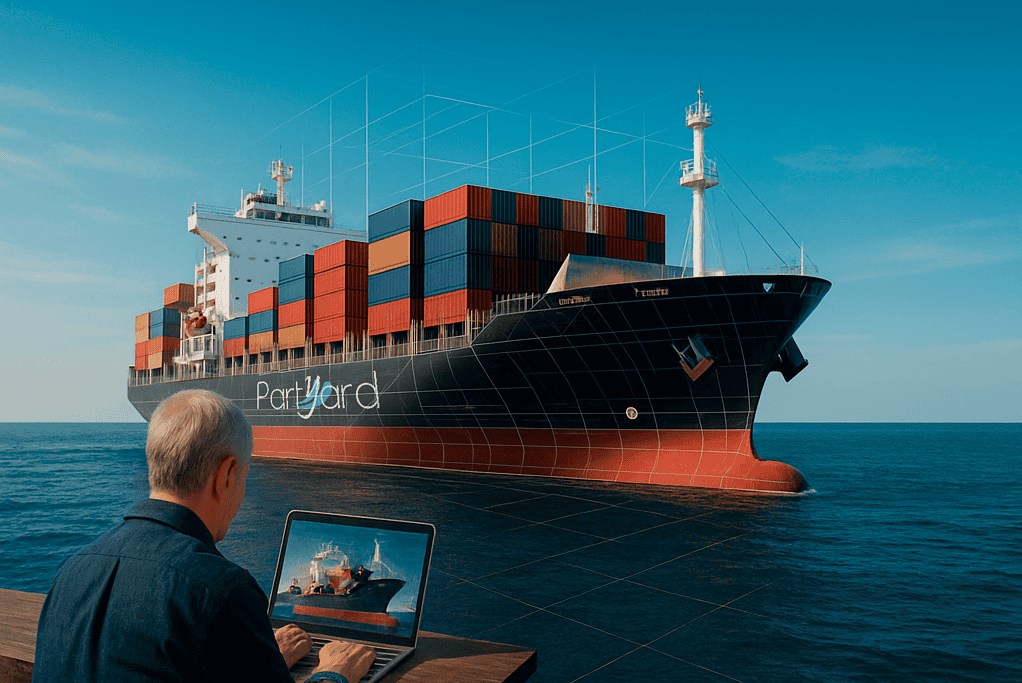Blending Legacy and Innovation: The Evolving Role of Naval Architecture

In today’s maritime world, naval architects are bridging centuries-old traditions with modern-day innovation, creating vessel designs that not only meet current operational needs but also anticipate future demands.
The roots of naval architecture lie in deep-seated tradition — techniques passed down through generations. The 18th century introduced scientific methods, applying mathematics to hull design, and the Industrial Revolution brought transformational changes through iron and steam. Fast forward to the 21st century, and digital tools have joined the naval architect’s toolkit: CAD software, Artificial Intelligence (AI), and data-driven modeling are now essential for optimizing every aspect of vessel design and performance.
With technologies like digital twins, designers can now model fuel consumption across entire voyage profiles, anticipate maintenance needs, and monitor ship behavior in real-time — extending their influence from initial concept through to operational lifecycle.
Despite this digital shift, the craft remains grounded in classical principles. The best naval architects balance deep, intuitive understanding of vessel behavior with proficiency in the latest tech. They now work hand-in-hand with data scientists and software engineers, merging traditional engineering instincts with innovative foresight.
As John Gilbert, President of Gilbert Associates Inc., puts it, “We continue to work with clients, old and new, to apply traditional best practices to a modern fleet.” For over 60 years, his firm has embodied this balance of legacy and progress.
Designing for the Future
New tools may improve design speed and accuracy, but naval architects face a growing list of challenges. Today, they are no longer just engineers — they are strategic partners, involved throughout a vessel’s operational life.
This includes “future-proofing” designs — predicting the impact of upcoming regulations, fuel transitions, and emerging technologies, long before they arrive.
“It’s easy to talk about future-proofing,” says Morgan Fanberg, CEO of Glosten, “but it’s far harder to achieve.” Most domestic vessels are built to last 30 years or more. Every design decision must weigh both current needs and future adaptability. Choosing advanced equipment is only part of the solution; allowing room for upgrades is equally critical.
However, these forward-looking strategies come with risks. New tech often lacks a track record, and integration costs can climb quickly. And sometimes, predictions simply miss the mark. “True future-proofing is about balancing foresight, flexibility, and cost,” Fanberg explains — a delicate act of building for today while leaving space for tomorrow.
Navigating Regulatory Complexities
One of the longest-standing hurdles in vessel design is regulation. As technology advances at breakneck speed, maritime regulations are often slow to keep up — and, at times, are applied in ways that don’t fit emerging systems.
Take, for example, the Capt. Almer Dinsmore, New England’s first hybrid diesel-electric ferry, designed by Gilbert Associates. The integration of lithium-ion batteries, fire suppression systems, and new electrical frameworks under restrictive Subchapter K tonnage rules required close collaboration between designers, regulators, and equipment suppliers.
Across the industry, new technologies often push the boundaries of existing standards. Norwegian firm Breeze Ship Design faced this when designing the world’s first LNG-powered offshore support vessels. At the time, there were virtually no applicable rules — so the team followed the IMO’s alternative design process, creating new safety benchmarks in collaboration with industry peers.
Rather than keeping these advancements proprietary, Breeze chose to share them openly, fostering broader industry development. “Sharing our innovations with other stakeholders drives the whole market to a higher level of safety and efficiency,” says CEO Ove Wilhelmsen.
Modernizing the Old
New shipbuilding isn’t the only focus. A significant part of today’s naval architecture revolves around life extension projects — converting and upgrading older vessels to extend their operational lifespan while improving performance and sustainability.
Breeze, for example, has a dedicated team focused on vessel conversions. One flagship project is the Apollo conversion of the Viking Energy — originally built in 2003 as the first LNG-powered offshore vessel. Working alongside Equinor and Eidesvik, the firm is now converting it to run on ammonia, showcasing how modern technologies can breathe new life into legacy ships.
These upgrades often include integration of centralized management systems, enabling crews to shift from reactive maintenance to predictive maintenance, improving efficiency and safety.
“In a world facing a shortage of skilled mariners, these improvements are critical,” says Glosten’s Fanberg. “It’s not just about automation — it’s about enhancing the daily experience of crew and operators.”
A New Era of Naval Architecture
Today’s naval architects are far more than designers. They are systems thinkers, digital planners, and sustainability advocates.
The next decades will see even closer ties between designers and operators. Tools like AI will enable testing of thousands of design variants before construction even begins. Regulations will continue to evolve, and with them, the push for zero-emissions vessels and autonomous operations will intensify.
Forward-looking firms understand that tradition and innovation are not opposing forces — they’re complementary. By embracing both, they’re not just designing vessels; they’re building the future of maritime operations.
As Robert Ekse, President of Elliott Bay Design Group, concludes:
“We’re not here to follow trends — we translate them into real-world solutions. It’s about collaboration, purpose, and designing what’s next — together.”
Moving The Sea With Us!
Contact us today: +351 265 544 370 or go to Contacts Page
Email: sales@partyard.eu
#PartYard #CyberSecurity #AIrisks #LLMSecurity #AIThreats #DataLeak #AIVulnerabilities #EnterpriseAI #BlackHat2025 #CiscoResearch #TechAwareness #InfoSec #AICompliance #MachineLearning #SecureAI



